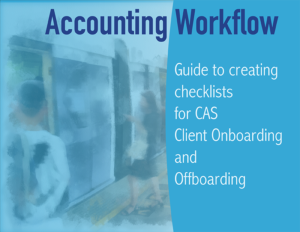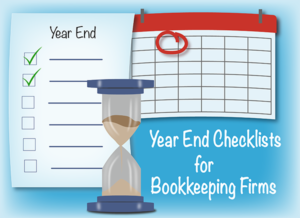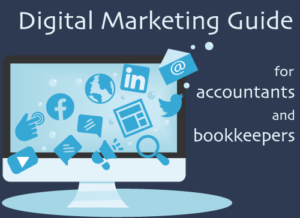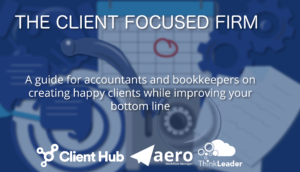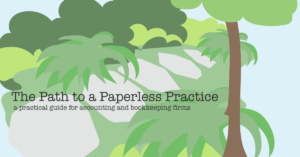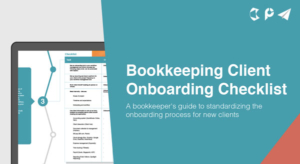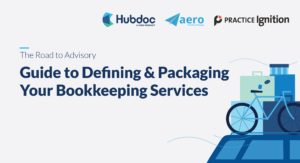The sales process is often a mystery to people who run client accounting service firms. To celebrate Global Bookkeeping Week, Laura Redmond shares with us her journey in trying to figure out how to effectively and profitably sell her firm’s services. She will also be talking about her journey and demonstrating how her Web Store works in a webinar on Wednesday, September 14th. View the Webinar
Conquering Service Delivery
Performing client accounting work requires time and resources to carefully apply one’s knowledge and experience and tools to the task at hand to deliver quality service. As I was starting my firm, I was prepared for that. Running a firm that delivers client accounting services is another matter entirely. Eleven years in, it has been a tremendous learning experience. Looking back, the first years were about delivering good service, using whatever tool the client had selected. Then we began to gain expertise in specific tools and defined our processes. As we grew and team collaboration became critical to our success, we built Aero Workflow to manage our service delivery. Aero allows us to profit from our knowledge capital. To this day, Aero is the core of our firm.
Fixed Fees made the Sales Process Crucial
 With service delivery tightly organized, the sales cycle felt like a game of Whack-a-Mole. It has repeatedly reared it’s ugly head as the most difficult process in our organization. We did not have the budget for a salesperson. And honestly, we found it difficult to imagine this person capable of explaining the work, without being able to perform it. We tried this. If the person could perform that type of work, then they would invariably be pulled into performing client work. And none of us with client work assigned had time for sales. A vicious cycle.
With service delivery tightly organized, the sales cycle felt like a game of Whack-a-Mole. It has repeatedly reared it’s ugly head as the most difficult process in our organization. We did not have the budget for a salesperson. And honestly, we found it difficult to imagine this person capable of explaining the work, without being able to perform it. We tried this. If the person could perform that type of work, then they would invariably be pulled into performing client work. And none of us with client work assigned had time for sales. A vicious cycle.
For the first 6 years of our firm’s existence, we billed hourly. We sold our time. We attended industry conferences and took copious notes on value billing and fixed fee pricing. We were fired up about it. Our motto became “circle slash receivables”. In 2011 we switched our existing clients to fixed fee service plans automatically paid on the 1st of each month. New prospects were compared to existing businesses to find a similar service-set, as a way of guessing at what the fixed fee should be. We created a beautiful proposal that showcased our cloud-accounting services. We would copy the last proposal document created and change the names & details of the services and spend hours and hours trying to calculate a fair and reasonable fee for the prospect-at-hand. While it was better than it had been, we did not enjoy nor feel confident in our sales process.
Our first Web Tools
Then we built a couple of web tools: a Needs Assessment and a Quote Maker. Clients would fill out the Needs Assessment web form with all sorts of details that we requested and submit it to us. We used that information in our Quote Maker to select appropriate services and pricing from a master menu and pull it onto a quote for the prospect. This was the beginning of our attempt to automate our sales process. Problem was, each prospect’s business was different and there were so many potential options, it was difficult to create only 3 options. It still took us several hours to decide on the right menu items to include in each of three packages to pull onto the quote. But a great improvement was that at the push of a button, a beautiful proposal would generate with three different service plan options from which the prospect could select a best fit for their business. Prospects would then inevitably want a hybrid using parts of each plan and we’d issue several versions until we all agreed upon a final plan. While it was better than it had been before, we still did not enjoy nor feel confident in our sales process.
We found that we would often ignore incoming leads, because we didn’t have time for the sales process or because it was so difficult to navigate. Here are some of the main difficulties we grappled with:
- Conveying the value, look and feel of the cloud-accounting services we provide so that prospects understand the game-changing efficiencies and benefits of the scalable infrastructure we would be providing them
- Clarifying exactly which services we offer
- Effectively communicating how our services work so the prospect has very clear expectations
- Determining price
- Haggling over price
- Negotiating
- Setting expectations for firm vs client responsibilities
- Closing sales that result in profitable work
- Clarity on exactly what services & frequency they purchased to avoid scope creep
We Needed a Better System
Last year we embarked on a mission to find some solutions to these problems. The goal was to create a sales system to:
- Give prospects better access to service descriptions and pricing…instead of waiting for one of us to finish our client work and return their call
- Give prospects detailed the ability to build their own service plans
- Help the client understand up front what was and was not included in the package of services they chose
- Present our prices in such a way as to eliminate haggling
Once we had identified our needs, we built a web store for client accounting services. This is a work in progress and we are still in the early days. We have learned so much about all aspects of accounting practices from our peers who share their stories freely and openly, that we want to share our system so that we can test it together as an industry. In the next blog, I’ll share with you how our web store works.



